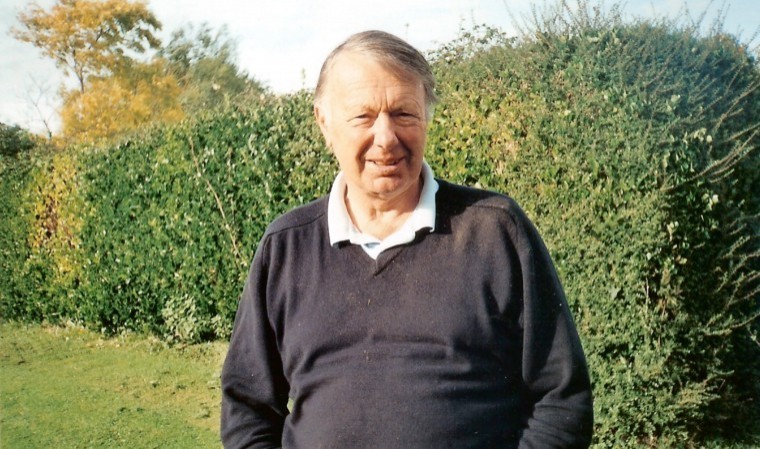As planned, we just spent a few days up in Scotland, a truly beautiful country. Yet we soon felt the beginnings of depression creeping on. It gets to you when the moist clouds come in relentlessly day after day.
The rain even falls when there is barely a cloud in the sky. It was almost enough to give me a chip on my shoulder and so I could almost see why so many Scots also appear to have the affliction and voted SNP! Is it the effect of living under a permanent cloud?
In the last few years I have got to know a couple of brothers with a modern dairy just south of Loch Lomond. They are lifelong farmers who do the job well but, when you regularly cannot get the cows out of the barns until mid June, before bringing them back inside by early September, life must be pretty difficult. On top of that, getting under 20 pence per litre for your milk – I would say they need medals!
I digress. Braving a day up on the mountainside with Charles and Barry, who oversee things up there, we faced a constant gale bringing a mixture of hail and driving rain. The trees however were obviously loving it. The Sitka Spruce, planted on higher land, looked amazing.
As I had anticipated their growth was phenomenal, with many of the first planted – four years ago now – between nine and 10 feet and bursting with fresh buds. Hardwoods, all expensively staked and deer fenced, were outgrowing their post supports in many cases. But, due to very strange Scottish government/Forestry Commission rules, that doesn’t seem to matter, since those trees don’t apparently have any value, or future.
So I guess in 15 years time most will be lying on their side feeding the wildlife, from deer and birds to bugs. It seems the ecological angle is seen as more important than producing timber which, one would reasonably imagine, was why they were planted and grant aided. Unfortunately not. It’s a crazy, short sighted idea. There should surely be a local logging/firewood industry developed around this timber instead of wasting it. I do understand this situation is being reconsidered.
However, this nonsense aside, it is invigorating up on those windswept slopes. All our summer birds are there: cuckoo calls reverberate off the high spots; swallows and martins flit along the more sheltered tree lines, having ventured another 500 miles north, presumably simply because their forebears bred there, when the conditions further south would give them a better lifestyle.
A few roe deer were causing minor damage and red deer were moving into the area from forest clearances further afield. Just to add to the mix, a neighbouring sheep keeper (perhaps the wrong description) has decided his animals did better using the grass around our trees, so was happily letting his stock graze among them. This must be good value and saves growing his own grass. He now knows, and we will see if he takes it on board!
So after four days, with a slight remission on one day, we were again heading to warmer climes. Luckily that day we had agreed to host some old friends, the Hays, across from their seriously excellent farms around Carnoustie and Arbroath in Angus. Tom left us, politely saying how impressed he was – yet I think his family’s hundreds of acres of quality arable, potatoes, cereals and rape was probably more to his liking. Trees do take a bit less management, though.
Then it was back through the Borders, all pretty short of grass for June although some silage was being baled on drier land.
Returning home a week later, with the farms in Emma’s care, all was running pretty smoothly apart from one caesarean section on a first time heifer. The calf was dead but mother was on her feet. All the barley spraying was thankfully finished and the maize taking off in the moist thundery conditions of early June.
Emma had been running the robots during herdsman Simon’s surprise short holiday treat in the West Indies. My staff either go on cruises, or exotic places, which should be telling me something when our only break in 18 months has been to a very damp Scotland.
We now have to decide how to use a very heavy crop of second cut ryegrass, which would normally go into the clamp. But, this year, it was planned to be baled and wrapped for our excess of heifer calves next winter. However baling and wrapping is very expensive when you potentially have too much food, so we will offer it around. Ironically everyone has plenty it seems. With the atrocious milk prices, and the lack of any potential for improving milk returns in the medium term I wonder how many will still be even keeping cows come new year 2016?
The more I speak to other farmers the more it appears they are despairing at the state of traditional farming’s prospects. Common comments are along the lines of “Makes you wonder who is going to be left to do the job” or “What have we been working all our lives for when what we produce is so undervalued, by both buyers and the general public” or “What sane youngster would want to come into this job?”
Apart from the few dairymen presently on special supermarket terms for their milk, doubtless about to be reduced, it is general depression. There are some in specialised areas/crops who are still more optimistic which is great but, as every year passes, the prospects for England’s traditional family farms and farming diminish.
I do hope I am wrong but, when you see smaller units closing in the area and land – if not being built on – being bought up by wealthy speculators, there seems not many prospects for young people to advance independently in agriculture. Yet rents stay high. Progress, eh?




